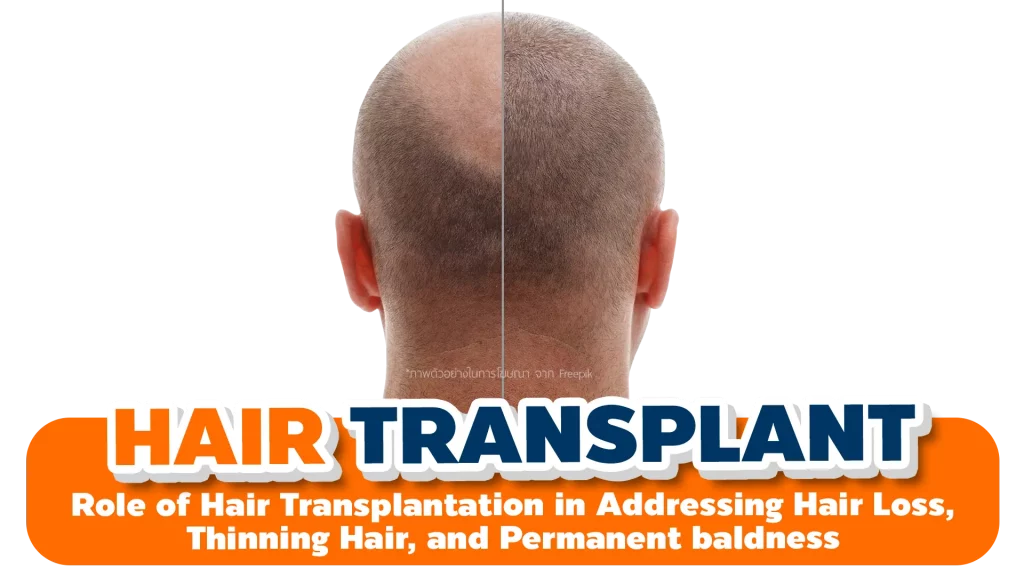
Role of Hair Transplantation in Addressing Hair Loss, Thinning Hair, and Permanent baldness
Hair loss, thinning hair, or even baldness can be distressing issues for both young men and women. Fortunately, one permanent solution to these concerns is hair transplant surgery. Are you curious about the details of this procedure? Or perhaps you’re interested in learning about other methods for hair growth? Let’s explore together.
Let's explore the concept of hair transplantation and its role in combating hair loss. Can it genuinely rejuvenate thinning hair?
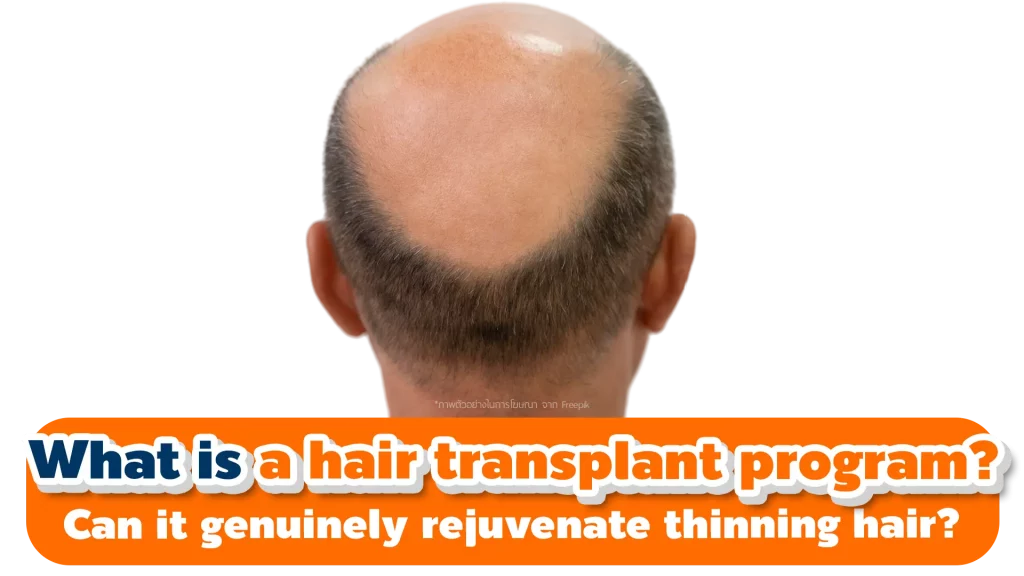
Hair transplantation involves surgically transplanting hair follicle cells into areas affected by thinning or baldness, effectively addressing these concerns. Additionally, it helps enhance the appearance of the hairline and can soften facial features. Moreover, hair transplantation can be utilized to grow hair over scars on the face, including eyebrows, mustaches, or areas along the hairline.
Who is a suitable candidate for hair transplant surgery, and who should consider alternative options?
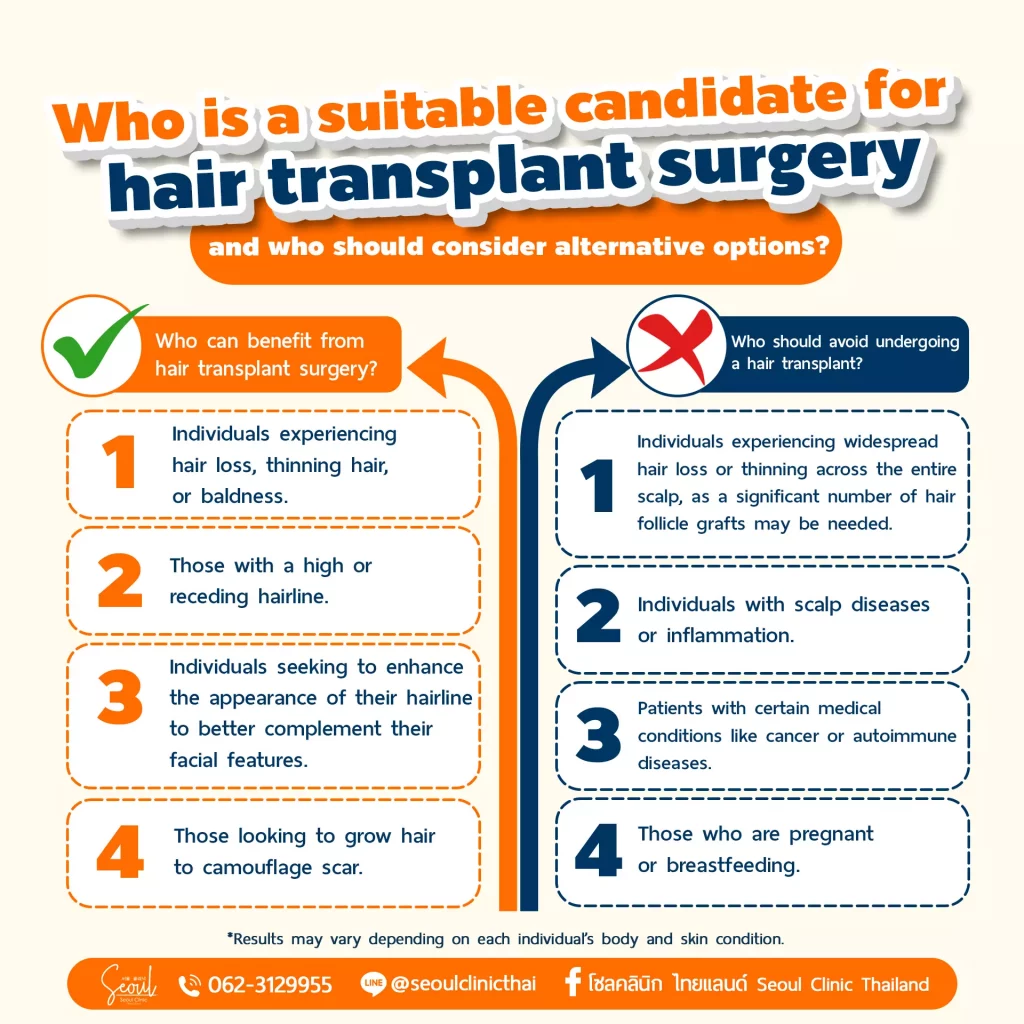
Who can benefit from hair transplant surgery?
- Individuals experiencing hair loss, thinning hair, or baldness.
- Those with a high or receding hairline.
- Individuals seeking to enhance the appearance of their hairline to better complement their facial features.
- Those looking to grow hair to camouflage scar
Who should avoid undergoing a hair transplant?
- Individuals experiencing widespread hair loss or thinning across the entire scalp, as a significant number of hair follicle grafts may be needed.
- Individuals with scalp diseases or inflammation.
- Patients with certain medical conditions like cancer or autoimmune diseases.
- Those who are pregnant or breastfeeding.
How many techniques exist for promoting hair growth through transplantation procedures?
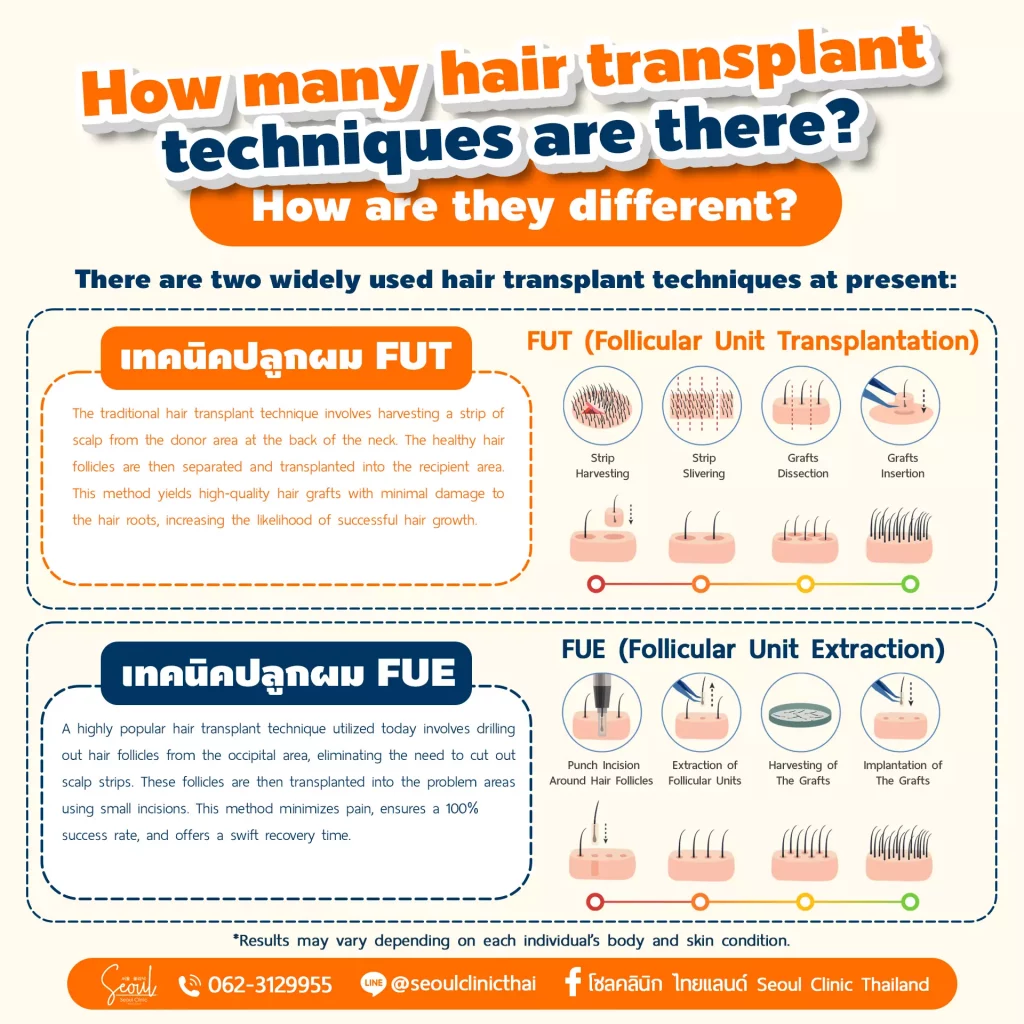
FUT hair transplant technique
The traditional hair transplant technique involves harvesting a strip of scalp from the donor area at the back of the neck. The healthy hair follicles are then separated and transplanted into the recipient area. This method yields high-quality hair grafts with minimal damage to the hair roots, increasing the likelihood of successful hair growth.
FUE hair transplant technique
The basic procedure for Follicular Unit Extraction (FUE) hair transplantation
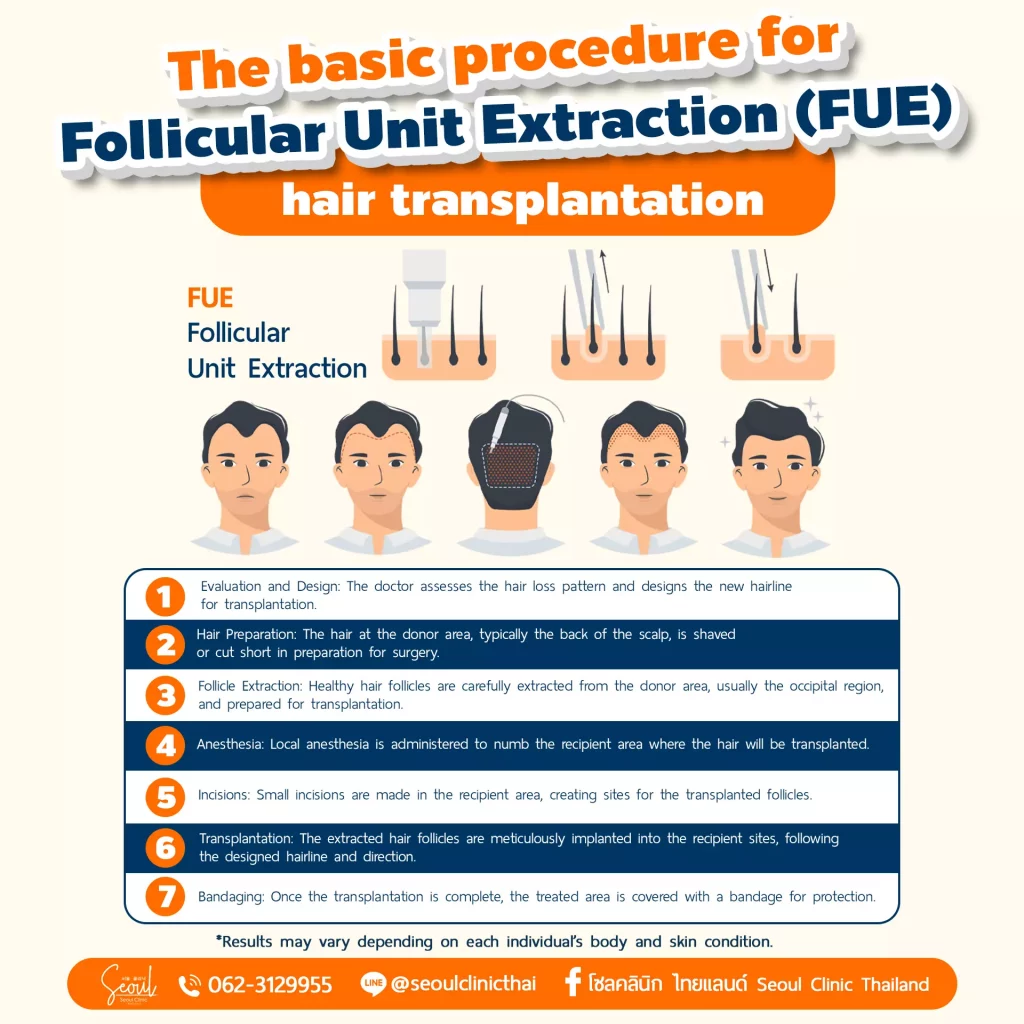
- Evaluation and Design: The doctor assesses the hair loss pattern and designs the new hairline for transplantation.
- Hair Preparation: The hair at the donor area, typically the back of the scalp, is shaved or cut short in preparation for surgery.
- Follicle Extraction: Healthy hair follicles are carefully extracted from the donor area, usually the occipital region, and prepared for transplantation.
- Anesthesia: Local anesthesia is administered to numb the recipient area where the hair will be transplanted.
- Incisions: Small incisions are made in the recipient area, creating sites for the transplanted follicles.
- Transplantation: The extracted hair follicles are meticulously implanted into the recipient sites, following the designed hairline and direction.
- Bandaging: Once the transplantation is complete, the treated area is covered with a bandage for protection.
What are the instructions to adhere to post hair transplantation?
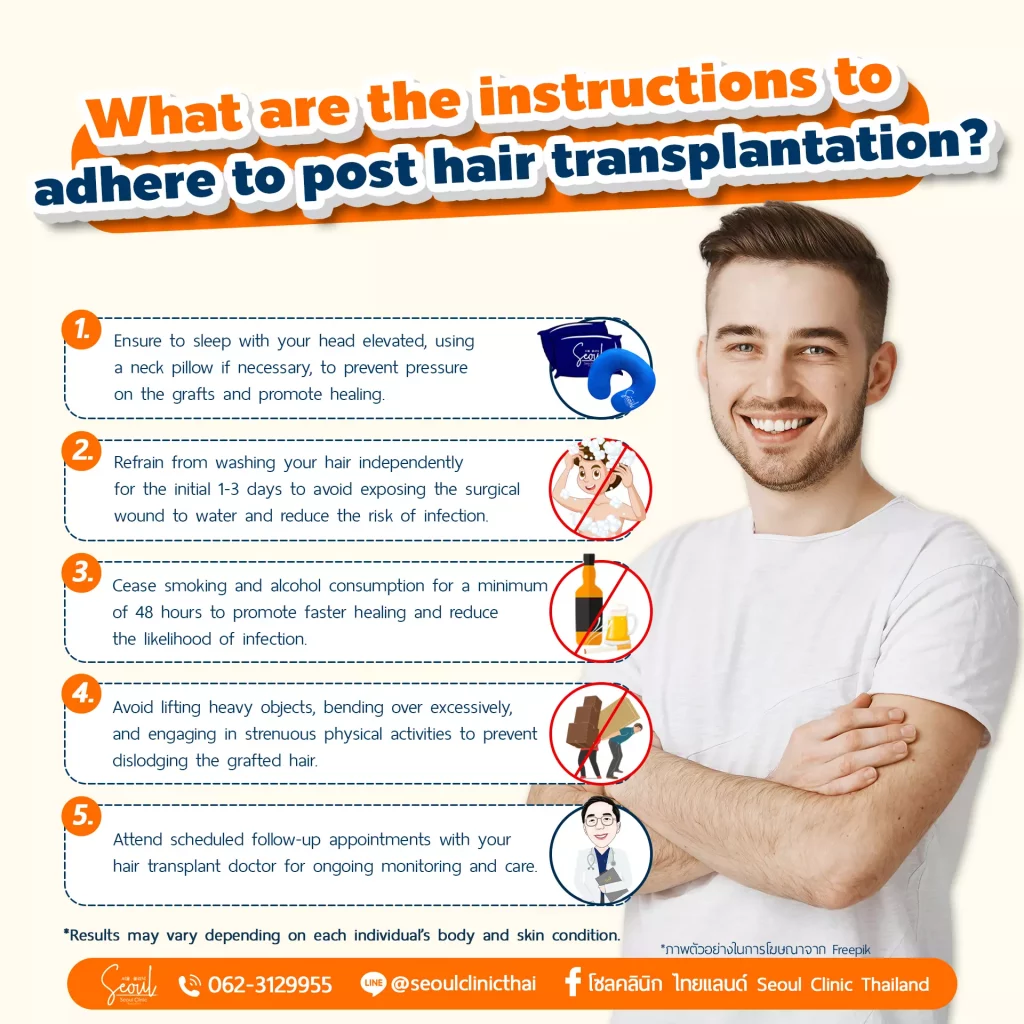
- Ensure to sleep with your head elevated, using a neck pillow if necessary, to prevent pressure on the grafts and promote healing.
- Refrain from washing your hair independently for the initial 1-3 days to avoid exposing the surgical wound to water and reduce the risk of infection.
- Cease smoking and alcohol consumption for a minimum of 48 hours to promote faster healing and reduce the likelihood of infection.
- Avoid lifting heavy objects, bending over excessively, and engaging in strenuous physical activities to prevent dislodging the grafted hair.
- Attend scheduled follow-up appointments with your hair transplant doctor for ongoing monitoring and care.
Does hair transplant surgery typically involve discomfort or pain?
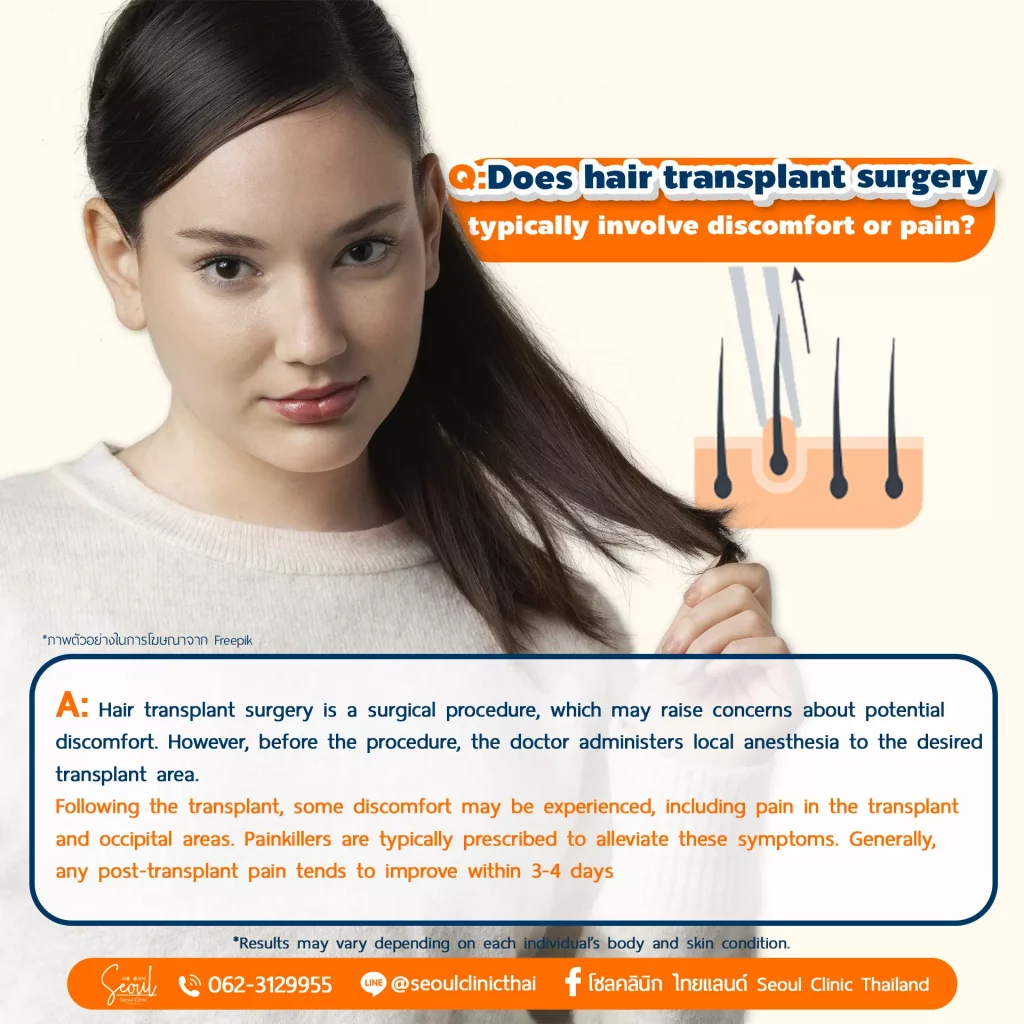
Hair transplant surgery is a surgical procedure, which may raise concerns about potential discomfort. However, before the procedure, the doctor administers local anesthesia to the desired transplant area.
Following the transplant, some discomfort may be experienced, including pain in the transplant and occipital areas. Painkillers are typically prescribed to alleviate these symptoms. Generally, any post-transplant pain tends to improve within 3-4 days.
What is the typical timeframe for hair regrowth following a hair transplant procedure?
Hair transplants necessitate a duration for hair growth, which can span months to years before full results become apparent.
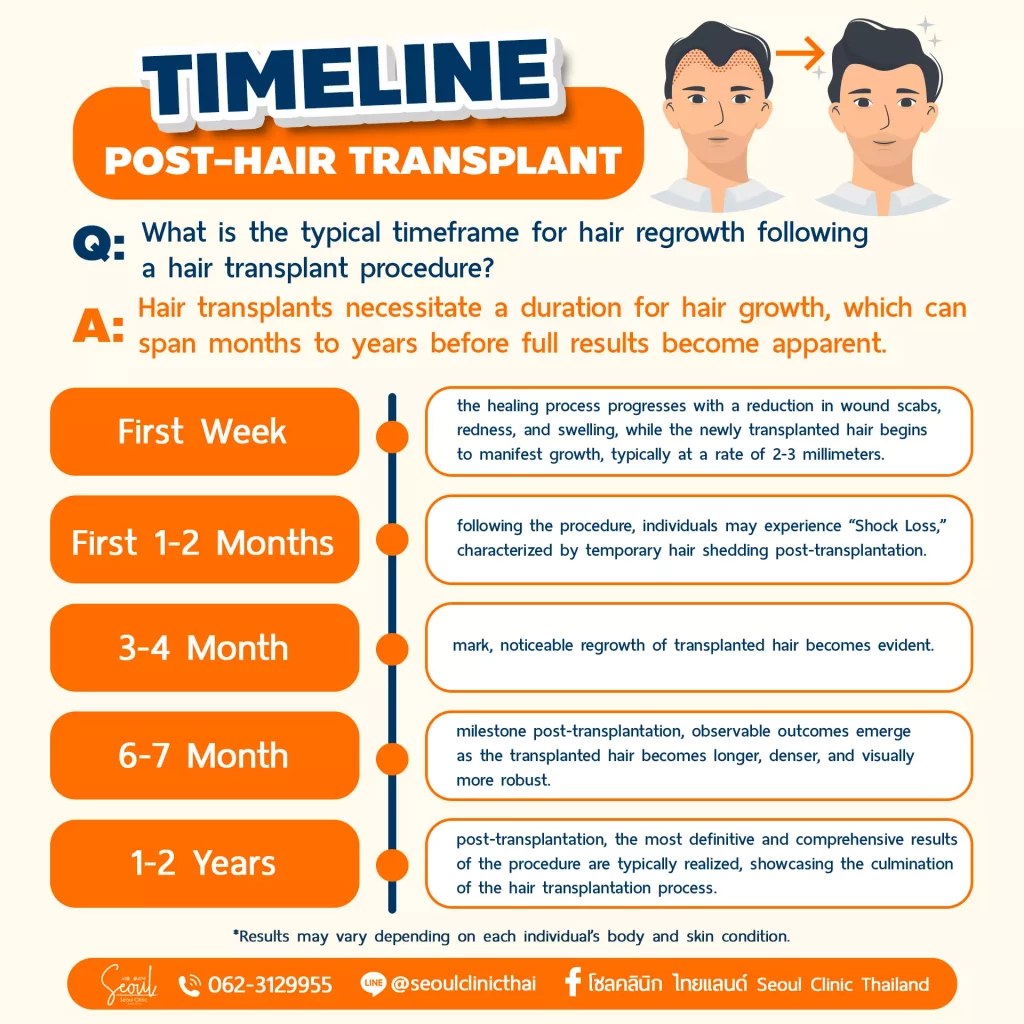
- In the initial week post-hair transplant, the healing process progresses with a reduction in wound scabs, redness, and swelling, while the newly transplanted hair begins to manifest growth, typically at a rate of 2-3 millimeters.
- Within the first 1-2 months following the procedure, individuals may experience “Shock Loss,” characterized by temporary hair shedding post-transplantation.
- Around the 3-4 month mark, noticeable regrowth of transplanted hair becomes evident.
- By the 6-7 month milestone post-transplantation, observable outcomes emerge as the transplanted hair becomes longer, denser, and visually more robust.
- Between 1-2 years post-transplantation, the most definitive and comprehensive results of the procedure are typically realized, showcasing the culmination of the hair transplantation process.
What are the essential steps to prepare for a hair transplant surgery beforehand?
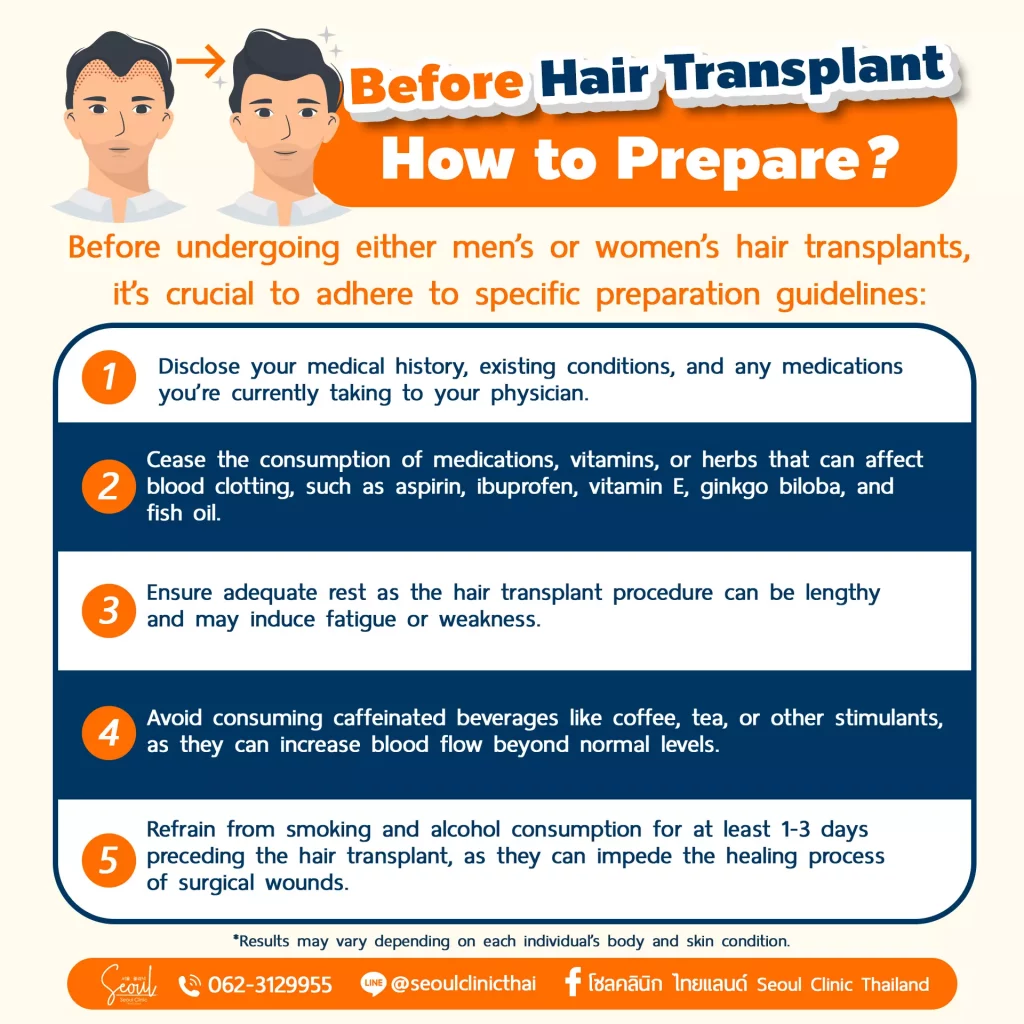
Before undergoing either men’s or women’s hair transplants, it’s crucial to adhere to specific preparation guidelines:
- Disclose your medical history, existing conditions, and any medications you’re currently taking to your physician.
- Cease the consumption of medications, vitamins, or herbs that can affect blood clotting, such as aspirin, ibuprofen, vitamin E, ginkgo biloba, and fish oil.
- Ensure adequate rest as the hair transplant procedure can be lengthy and may induce fatigue or weakness.
- Avoid consuming caffeinated beverages like coffee, tea, or other stimulants, as they can increase blood flow beyond normal levels.
- Refrain from smoking and alcohol consumption for at least 1-3 days preceding the hair transplant, as they can impede the healing process of surgical wounds.
Post-hair transplant Side effects
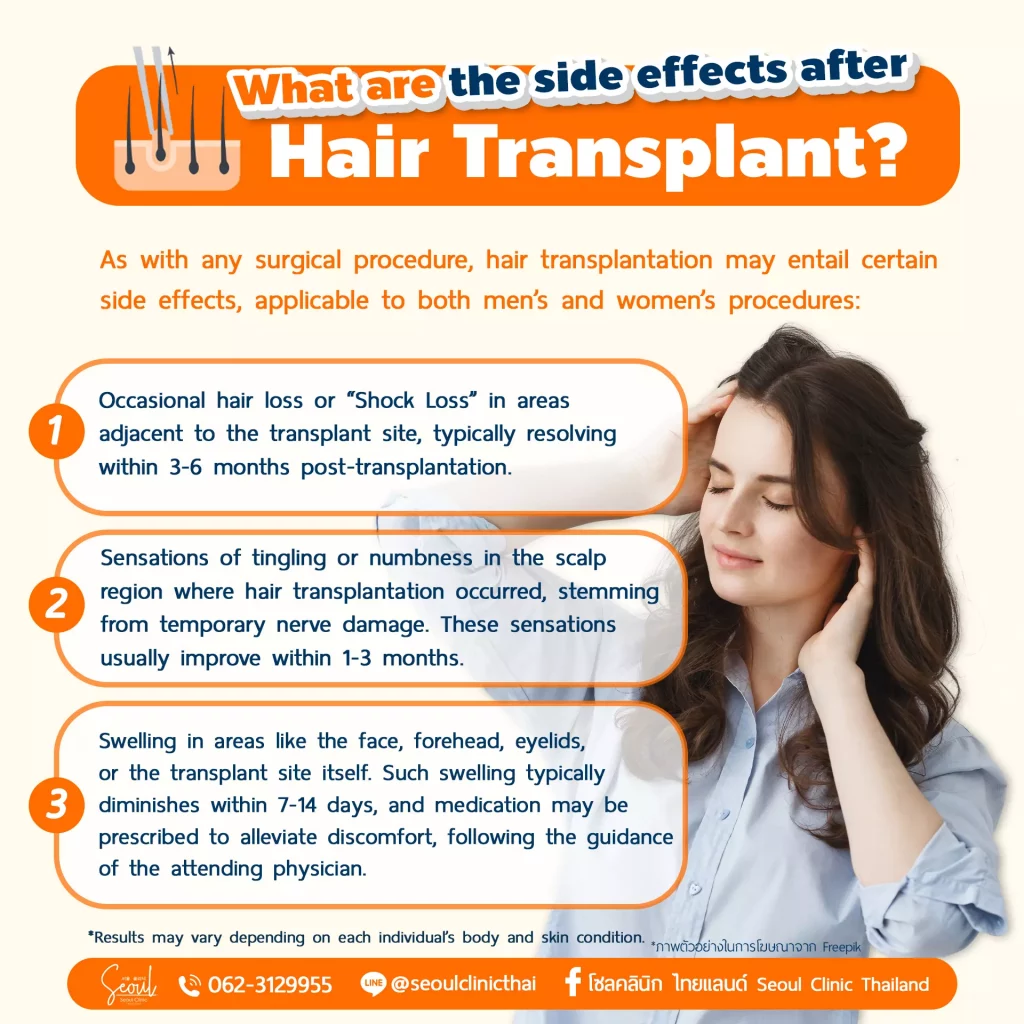
As with any surgical procedure, hair transplantation may entail certain side effects, applicable to both men’s and women’s procedures:
- Occasional hair loss or “Shock Loss” in areas adjacent to the transplant site, typically resolving within 3-6 months post-transplantation.
- Sensations of tingling or numbness in the scalp region where hair transplantation occurred, stemming from temporary nerve damage. These sensations usually improve within 1-3 months.
- Swelling in areas like the face, forehead, eyelids, or the transplant site itself. Such swelling typically diminishes within 7-14 days, and medication may be prescribed to alleviate discomfort, following the guidance of the attending physician.
What is the typical price range for a hair transplant surgery?
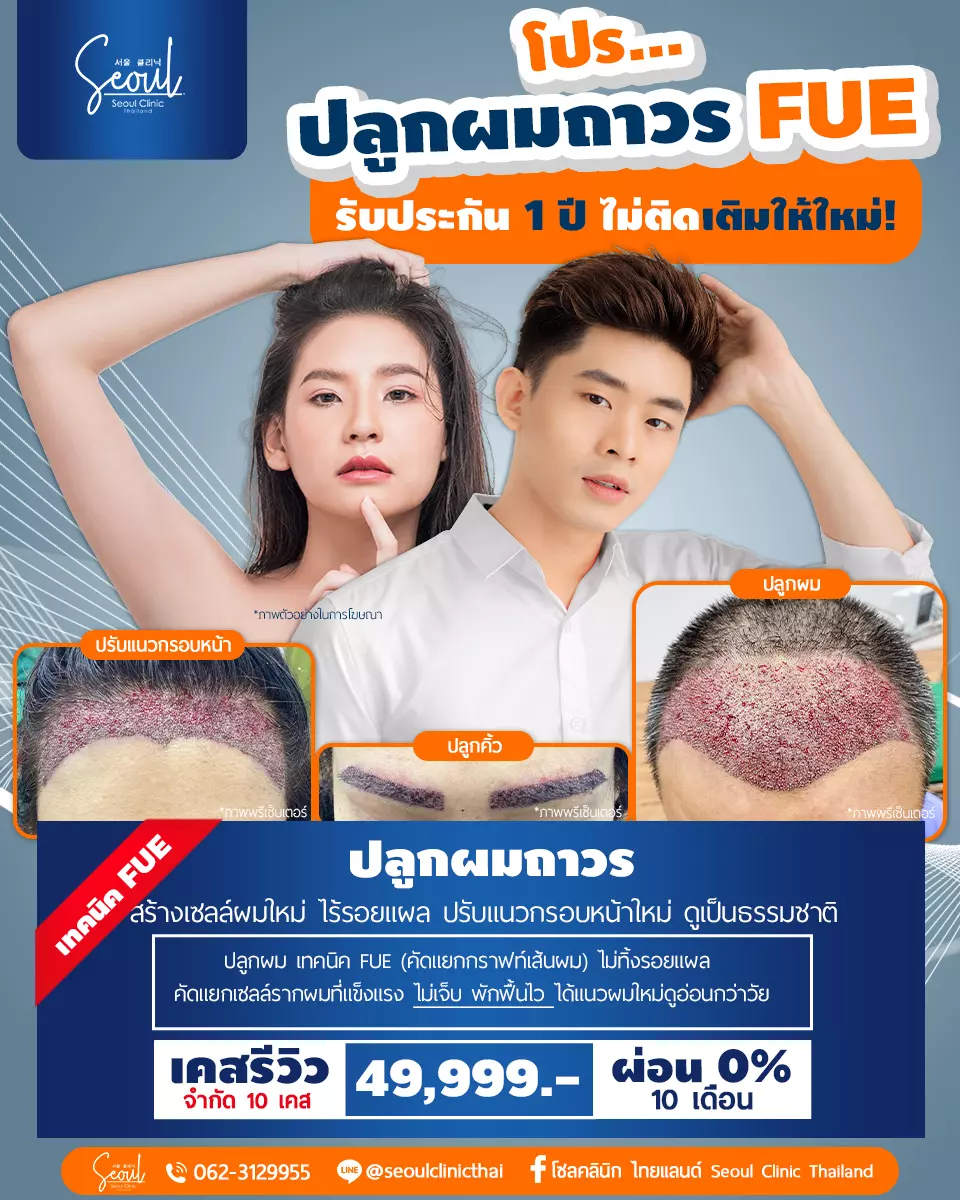
Hair transplant at Seoul Clinic Thailand, 1 year guarantee, if hair does not stick, will be refilled 1 time.
Summary
Hair transplantation is a surgical solution for hair loss, thinning, and baldness, providing permanent results and restoring confidence, especially in young women. Consulting expert doctors for evaluations and suitable care methods is recommended to ensure effective results and find the best place for a hair transplant.
Hair transplant duration


